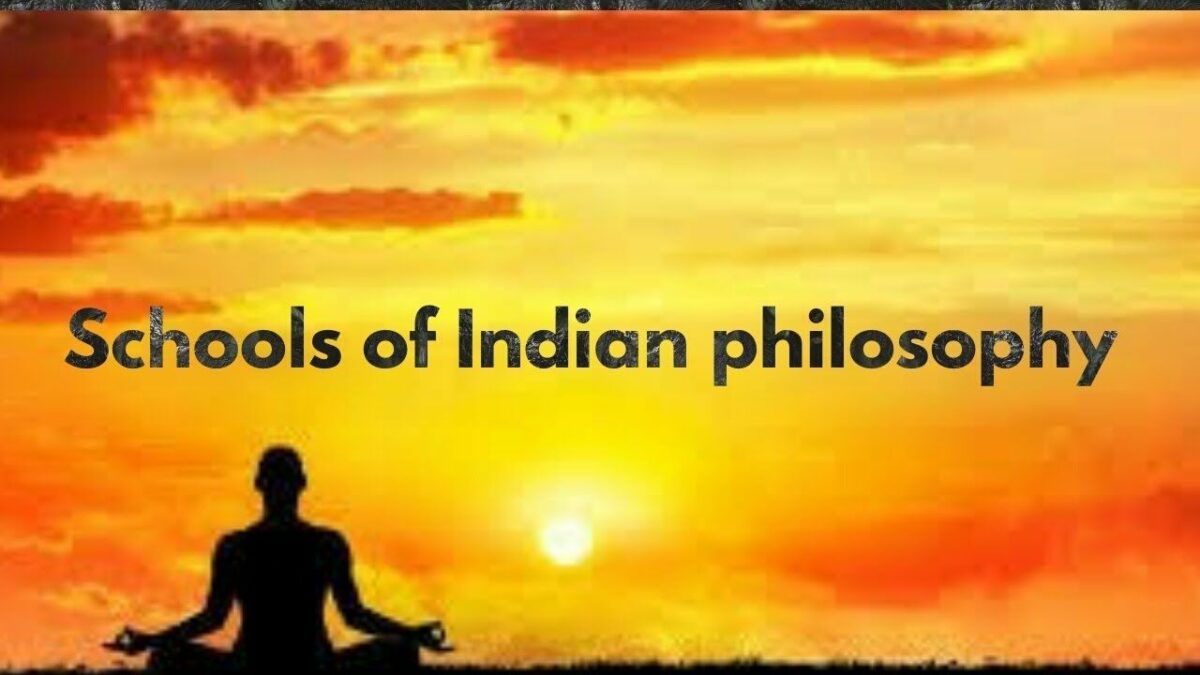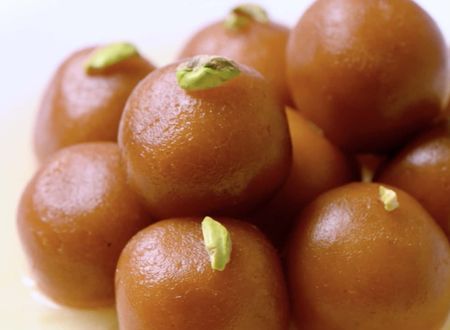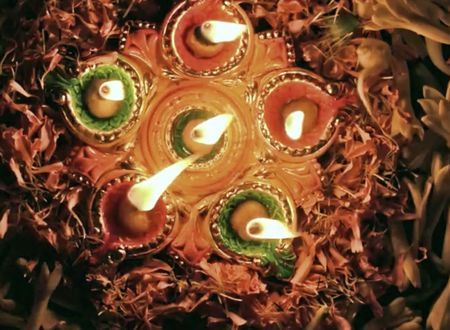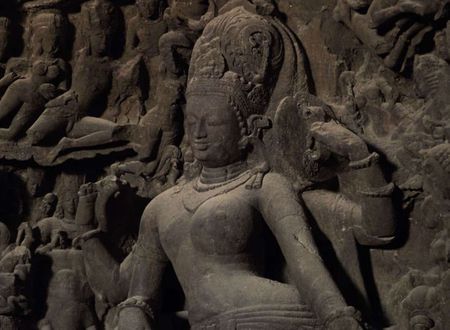Vedanta has come from two root words “vid” that means to know and “anta” that means “at the end” or “final”. So, the meaning of vedanta is “ that which is to be known at the end”. It is considered as ultimate or final knowledge.
The system took its stand upon the doctrines of the Vedas more than the previous systems did, and made an attempt to harmonize the preceding philosophies, such as the Sânkhya, Nyâya, Vaisheshika, and Mimamsa with the doctrines of the Vedanta.
The Sutras or aphorisms of Vyâsa are, in modern India, the basis of the Vedanta philosophy. Again, these Sutras of Vyâsa have been variously explained by different commentators. There are three main sub-schools in Vedanta namely Advaita, Vishishtâdvaita, and Dvaita propounded or revived by Adi Sankaracharya, Ramanujacharya, and Madhvacharya respectively.
Before explaining various sub-schools of Vedanta, let’s discuss two important concepts in Vedanta. The two important concepts in Vedanta are Atman and Brahman. Atman is the essence of being in an individual. As an individual being, we all are aware that we exists, the conscious principle within us is what Vedanta describes as “Atman”. Brahman, on the other hand, is an unchanging, universal consciousness which underlies all things. Brahman is the substratum of all that exists.
Advaita Vedanta Darshan:
Advaita Vedanta is radical and transformative in the sense as it declares at the very outset that Atman, the individual self is none other than the universal self. It claims that the separateness and plurality in the world appears to exist due to Maya. Maya, according to them is the illusionary power of Supreme Being that he throws on the conscious lake of his own universal mind to appear different as a sportive play. Brahman identified with universal mind is Ishvara ( Supreme Lord with attributes) is not bound by Maya. However, Jiva identified by individual mind is bound by Maya. Brahman is the material cause, efficient cause, and the instrumental cause of the world.
Jiva, according to them is in essence already free and perceived to be bound by individual mind due to self-deluding ego, karmic fruits, and impurities of the mind.The nature of the mind is transferred to the reflected consciousness(jiva), and so the experiences of the Jiva are nothing but the feelings and the modes of the mind.They say that this delusion happens due to Maya, mysterious power of Brahman that veils his own reality.
Maya is not a separate entity, but Brahman himself veiling his own reality as a sportive play by using Vikshepa Sakti ( the power of agitation), and Avarana Sakti( power of ignorance or dullness). They admit that the cause of Maya is unknown or can not be known. They also say Maya and Brahman are two sides of the same reality. When Maya appears, Brahman seem to disappear, and when one realizes his own Self, Atman which is equal to Brahman, Maya cease to exist for that Atman.
By the method of self-purification, one can attain the purity of mind, by contemplating on the words of scriptures, one can attain knowledge, and by performing right actions with the attitude of offering fruits to Supreme being, one can get rid of karmic fruits. As ego thins out, as well mind becomes pure, Jiva will experience the non-duality or oneness of his own existence with the universal existence . The world and its plurality will cease to exist for such a jiva and he becomes Jivanmukta, Atman one with the Brahman.
Brahman is the Supreme and universal pure consciousness without attributes or form in Advaita Vedanta. However, they also acknowledges a reality of Brahman with attributes and form( Saguna Brahman) who is a dependent reality of Brahman. According to them, Brahman alone projects as Jiva ( who is bound by Maya) and Isvara ( who lords over Maya). Brahman alone is the reality and Jiva and Isvara both cease to exist when the realization dawns.
Dvaita Vedanta Darshan :
The term ”Dvaita” is a Sanskrit word that means “duality”. This gives us an impression that they believe in two separate principles of reality to exist exclusive to each other and independently. However, Dvaita philosophy believes that Brahman(equated with Lord Vishnu) is the only independent reality(svatantra-tattva). The second reality but equally real universe that exists with its own separate essence comprising the Prakrti(Nature), Jiva(Soul), Kala(Time), Karma(Action) etc is a dependent (asvatantra-tattva) reality. This concept of two orders of reality, tattvas, that is, svatantra and paratantra is the keynote of the philosophy of Madhva, the great acharya who propounded the theory of Dvaita philosophy.
Dvaita recognizes the states of bondage and release as real states or experiences pertaining to the Atman. This system is designated tattva-vada(eternal tattvas) as opposed to maya-vada( elements appearing due to ignorance). It argues for the reality of the world. For it, the external world, the world of objects and situations that the human mind experiences is real and objective.
According to Dvaita philosophy, Prakriti and Jiva both have come into existence from the Brahman but Prakriti is Jada( inert), and Jiva is Chetana (conscious). Jiva, according to Dvaita is a amsa(part) of Brahman, not derived or produced from Nature( Prakriti). For Dvaita, the very essence of a jiva lies in its self- conscious relation, by way of consciousness, to the world of objects, be the material or spiritual. The jivatman, in its real nature, is a knower; agent of actions; and ,the experiencer of pleasures and pains. The distinguishing character of a self is its self-awareness which constitutes aham, ego. The individual self is a self-aware ego or personality.
Among the dependent entity, the first and foremost of conscious entities is Laksmi represented as the Consort of Visnu. Though, dependent absolutely, she has no bondage and is considered equal with independent Lord Vishnu. Like Visnu, she is all-pervading and has no material form but can manifest in infinite forms. Due to Supreme Lord’s grace, she has been bestowed the power to control the destiny of Jiva and the modifications of Prakriti.
Dvaita says that there are two indweller within, Jivatman who is the amsa of Brahman, and Paratman, who is the formless aspect of Brahman. The jivatman is fundamentally other than the Paramatman. The continuance of this difference between the jivatman and Paramatman is both in the states of samsara( bondage) and moksa (liberation). They believe Supreme Self, Brahman has a personal form that is eternal and he is full of attributes and qualities. For Madhva, the cosmic activity of Supreme Lord is eightfold. 1) He is the creator, 2)sustainer, and 3)destroyer of the world. He is also the 4) indweller in all sentient beings and 5) covers them with ignorance. He makes the Jiva 6) bound in matter, and he 7) bestows the gift of enlightenment by removing the avidya. The last activity of Supreme Lord is to grant liberation, that means entrance to Vaikuntha , and they consider enlightenment different than liberation. Liberation , in Dvaita, can be only attained by intense devotion and grace of Supreme Lord, Brahman.
VishishtaDvaita Darshan :
Qualified non-dualism (vishiShTAdvaita) is a bit complicated. It is more like an attempt to reconcile the above two schools of thought. On one hand, Dvaita says that Jiva and Bramhan are eternally separate. Advaita claims that soul is assumed personality within a body-mind complex due to self-deluding ego. As ego disappears, there will be no Jiva separate than Atman within who is none other than Brahman. VishiShTAdvaita takes a different stand and says that there is a non-duality in a sense that , God and soul cannot exist separately.
One more distinguishing feature of Vishishtâdvaita is the concept of Sri( Feminine aspect of Supreme Brahman), the consort of Brahman that is ever united with him. They do not believe her as separate than Brahman. Here, she does not play any particular part in the creative function of Lord as in Saktism of Tantra. She is Brahman alone in her feminine aspect. This is the compassionate side of Brahman that makes Brahman available to even the undeserving recipient. According to Vishishtâdvaita, Brahman in his masculine aspect stands for rustic and truth but in her feminine aspect, her love extends to the weakest soul and embraces her. Hence, the system emphasis a lot on invoking and adoring the feminine aspect of Brahman, addressed as Sri.
According to Vishishtadvaita, Brahman (Paramatma/Sriman Narayana) is the supreme and inner soul of universe as well as jivatma. Universe and Jivatma have body-soul (Sharira-Shariri) relationship with Brahman. Jivatma and Universe is the body and essential part of Brahman.
Universe is not unreal, it is the transformation of Brahman and Brahman (in its pure form) dwells inside it.
Jivatma (individual soul) and Brahman (supreme soul) are different and Brahman dwells inside Jivatma.
It is known as qualified non-dualism as it asserts the non-duality of Jivatma and Brahman in qualified way. (i.e Jivatma and Paramatma doesn’t exist differently – Paramatama always dwells inside Jivatma – both can’t exist separately. But Jivatma and Parmatma are (not same) different.
Vishishtadvaita insist on Complete surrender to Vishnu as means of Liberation.
Conclusion:
All the Vedantists agree on three points. They believe in Supreme Being, in the Vedas as revealed, and in cycles of creation and dissolution. They differ with respect to how they conceive of this reality, what realization, union or relation with this reality involves and how this is achieved.
Advaita : Atman is equal to Brahman ; Dvaita : Atman is dependent and separate than Brahman; Vishishtâdvaita: Atman and Brahman are inseparable like fire and heat, yet Atman and Brahman are not same and share a relationship of body and soul. Atman, though conscious is a body of Brahman.
Although, at a conceptual level, these three sub-schools appear so contradictory and different from each other. At an experiential level, the experiences gained by following each of the systems are quite similar. The indwelling nature of God and the individuals consciousness losing the awareness of its separateness in the absorption of the higher form of Spiritual communion, is not denied by any of these systems. The divergence comes majorly when these experiences are translated into intellectual concepts and clothed into Theo-philosophies.
My Final Stand on Vedanta:
The common theme that comes forth in all the sub-schools of Vedanta is :
- The intrinsic nature of human being is divine. He is all-pervading, immortal, and self-conscious.
- The divinity he seeks dwells within him as much as it is pervaded without.
- Self-Purification is a pre-requisite for Self-realisation.
- The final purpose of human life is to seek and realize the divinity within.
You, yes the one who is reading this post. You, my friend is essentially divine in nature. Offer all your actions to divinity within and without. Contemplate on Divine in form or formless aspect. Purify yourself at a physical, mental,emotional, and spiritual level, everyday. Be established in the knowledge that you are divine in nature.Realize the divinity within, Here and Now! This is the end, the Summum bonum declared unanimously by Vedas. Rest is commentary!!!
I offer this post to each one of you. May we all realize the divinity within here and now.
All Glories to Swamiji alone 🌼🌼🌼









Comments & Discussion
11 COMMENTS
Please login to read members' comments and participate in the discussion.